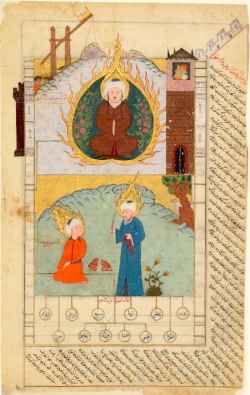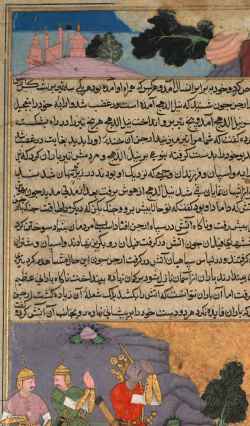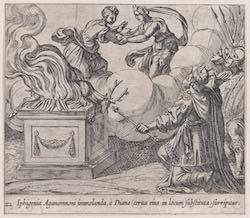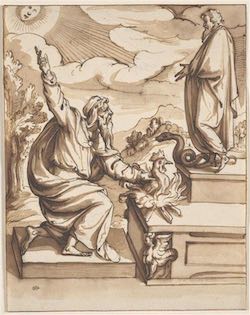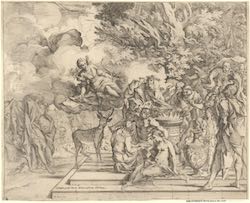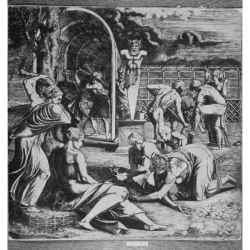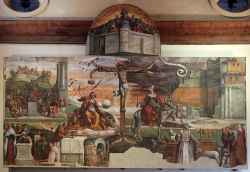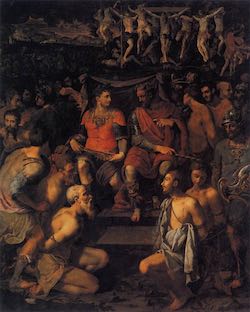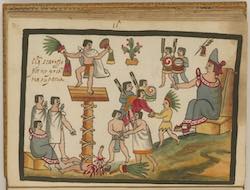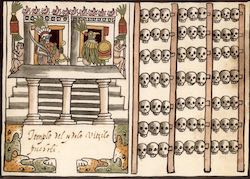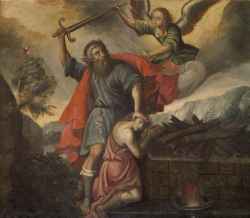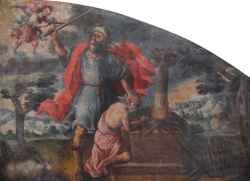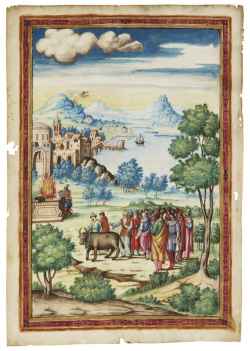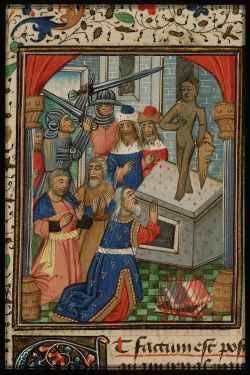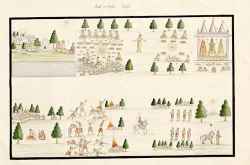Topic: 2. Sacrifice and religion: Comparisons, Antiquarians, Anthropology (16th-18th Century)
Religious sacrifices across various cultures and contexts sparked widespread interest in Early Modern Europe. As Christianity expanded into regions inhabited by "infidels" and "pagans", Europeans encountered a diverse array of sacrificial customs, ranging from the Sati rituals in India to the Aztec sacrifices in the Americas. This cross-cultural exposure captivated a wide audience, including theologians, philosophers, political thinkers, antiquarians, orientalists, missionaries, poets, artists, and even the general public. These encounters broadened the European understanding of sacrifice and led to a critical reassessment of classical and biblical sacrificial rites. This section includes:
- Sources: A selection of early modern printed materials, which include descriptions of the Americas, Asia, and Africa, alongside antiquarian and philological studies on religious sacrifice in classical antiquity and beyond. It also presents early modern works of ethnological observations and the first attempts to compare different sacrificial practices in various traditions and contexts, laying the groundwork for disciplines like the history of religions and anthropology.
- Iconographic Representations: A rich collection of images from the 16th to 18th centuries, illustrating a range of sacrificial rituals and practices as seen in different cultural and geographical contexts.
- Related Bibliography: An extensive bibliography spanning scholarly works from the 19th to 21st centuries, providing contemporary analyses and interpretations of these early studies and observations.
The sacrifice of Isaac. The Prophet Ibrahim (Abraham) surviving the furnace (above), and preparing to sacrifice his son Ism'il (below), from The Cream of Histories (Zubdat al-tawarikh) by Sayyid Luqman-i 'Ashuri (1585)
from: Sayyid Luqman-i Ashur, Zubdat al-tawarikh, Istanbul, Turkey
Sayyid Luqman-i Ashur, Zubdat al-tawarikh, detached folio, Chester Beatty Library, Dublin
"The First Adventure of the White Horse". The king performed the horse sacrifice in order to determine the extent of his rule. For one year a horse wanders and every land through which the horse passes becomes part of the king’s territory. Arjuna following the horse encountered the son-in-law of the god of fire, Agni, who creates a river of fire to block the warriors. Arjuna pleads with Agni, the god of fire that the horse be allowed to pass, saying that the horse sacrifice is in accordance with sacred Vedic injunctions, and that at the end of the year, the horse will be sacrificed to him, the god of fire himself. (1610-1617)
from: Page from the Khan Khanan's Razm Nama (Book of Wars)
The Cleveland Museum of Art
Iphigenia Agamemnoni immolanda, à Diana (cerva eius in locum substituta) surripitur (1606)
from: Antonio Tempesta, Metamorphoseon sive transformationum ovidianarum libri quindicem aeneis formis ab Antonio Tempesta Fiorentino incisi, et in pictorum antiquitatisque studiosorum gratiam nunc primum exquisitissimis sumptibus a Petro de Iode anteuerpiano in lucem editi, vol. 12, Anversa 1606, plate 112
Sacrifice of Polyxena [1590-1599]
from: Metamorphoseon sive transformationum ovidianarum...
Gabinetto Disegni e Stampe, Fondo Corsini; volume 57N1
Sacrifice of Iphigenia [1640 - 1642]
Metropolitan Museum of Art, New York
Sacrifice to Priapus (16th)
Warburg Insitute, London
Allegory of the Old and New Testaments and the Church triumphing over the Synagogue (1523)
from: Ferrara, Palazzo dei Diamanti
Ferrara, Pinacoteca
Martirio di sant'Acacio e dei suoi diecimila compagni sul monte Ararat (post 1555)
from: Catalogo generale dei beni culturali
Museo del Cenacolodi Andrea del Sarto,Firenze
An Aztec Noble’s Sacrifice for his Country [1585]
from: Codex Ramírez or Tovar - Relación del origen de los indios que hábitan esta Nueva España según sus Historias
John Carter Brown Library
Human Sacrifice in front of the King [1585]
from: Codex Ramírez or Tovar - Relación del origen de los indios que hábitan esta Nueva España según sus Historias
John Carter Brown Library
Skulls at the Temple [1585]
from: Codex Ramírez or Tovar - Relación del origen de los indios que hábitan esta Nueva España según sus Historias
John Carter Brown Library
The Sacrifice of Isaac (17th-18th)
from: Project on engraved sources of Spanish colonial art
Private Collection, Lima, Perú
The Sacrifice of Isaac (s.d.)
from: Project on engraved sources of Spanish colonial art
Iglesia de San Sebastián, Cusco, Peru
Ancient ritual sacrifice depicting a boar, a bull and a ram (suovetaurilia) being brought towards the altar at right, after a Roman relief from the Julio-Claudian era (1544-1577)
from: Series: Speculum Romanae Magnificentiae, published in Rome
Antiochus IV Epiphanes has the altar of sacrifice desecrated (1465)
from: Bible moralisée (Bruges)
Koninklijke Bibliotheek, The Hague, KB, 76 E 7
Buddha explaining the correct sacrifices according to the Veda. The story of Kalki, the destruction of the tyrants, and the Indian representation of the Buddha and the avatara of Kalki. [1774]
from: Rites and Beliefs of the Hindus [Indian Company Paintings]
London, V&A Museum

